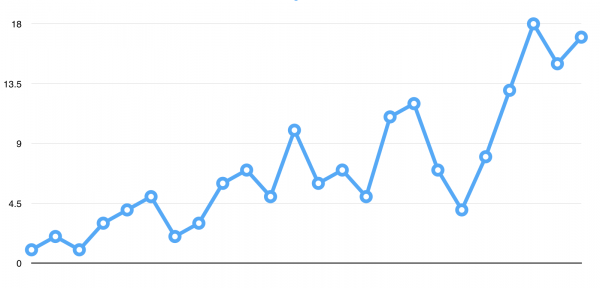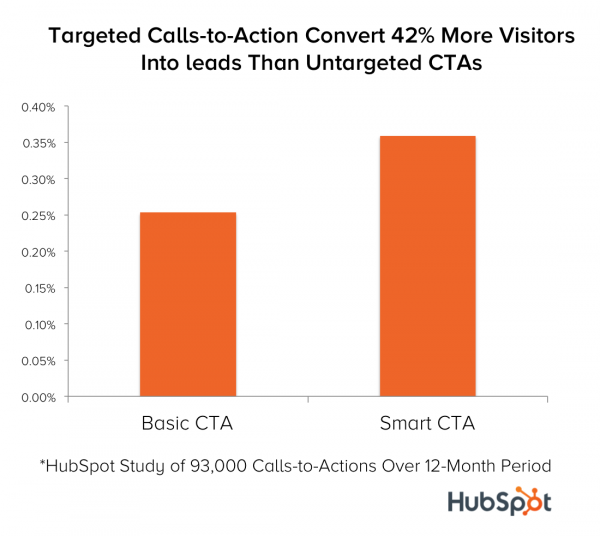
B2B Articles - October 18, 2015
Your conversion rate is the percentage of visitors who arrive on your website and take the intended action, such as downloading a piece of premium content, filling out a form to become a lead, subscribing to your newsletter, or requesting to speak to a sales representative.

For most B2B companies, increasing their conversion rate is a top priority because it boosts the number of quality leads in the funnel and generates increased opportunities to drive revenue. Conversion rate optimization is a vital process for B2B enterprises, but most website redesign processes do not improve conversion rates by themselves. We recommend adopting a more agile process with fast iteration cycles after launch to incrementally improve conversion rates using a data-driven process.
With that said, here are five ways to improve your B2B website’s conversion rate:
1. Design should be clear, contemporary, and accessible. The design of your website plays a critical role in driving conversions. In addition to being user-friendly and professional, the website design for your enterprise should also communicate trust and the fact that you’re a relevant, helpful, and supportive B2B brand. Use clear navigation so users can easily find what they need, and remove anything that could distract visitors from taking the intended action, such as alternative calls-to-action. We also recommend looking at your web analytics to identify drop-off points where you’re continuously missing out on conversions and fixing them.
2. Establish trust. B2B buyers won’t offer their private information if they’re concerned your website is not secure. To communicate your trustworthiness, feature credentials, testimonials, security badges, case studies, and your privacy policy. Also, prominently place your contact information so visitors know they’re interacting with a reputable business.
3. Communicate the benefits of your product or service. B2B purchases don’t happen overnight – they require time, research, and careful consideration. As such, make sure all the information customers need to make a purchasing decision is easy to find on your website. Using compelling language, tell buyers exactly how your product or service will solve their unique problems. What can you offer them that the competition can’t? What benefits will they enjoy as a result of using your product or service? Get customers excited about all the ways your offering can help them achieve their business objectives.


4. Identify high-quality leads and their pathways to purchase. Use lead scoring to separate high-quality leads that are almost ready to buy from leads that either aren’t yet ready to make a purchasing decision or will never become customers. Using marketing automation, send only the high-quality leads to sales, to ensure that your team invests their time and resources in prospects that are more likely to become customers. In this way, you’ll increase your conversion rate and deliver a more efficient and successful sales process.
5. Leverage email, automation, and re-engagement. For leads that aren’t yet ready to speak to sales – but still may become customers one day – use email and marketing automation to nurture them. Identify the touch-points that lead to a conversion, as well as the online behaviors that can help you segment your list for ongoing communications. This is critical, because a B2B sale most likely won’t be made during a single visit to your website, and you need a system in place to re-engage prospects and leads on an ongoing basis.
6. Be agile: iterate on design, communications, and the sales process using a data-driven process. We use a modified agile marketing process that is akin to growth hacking mixed with Inbound marketing to achieve results. Experimentation is vital to success. Don't just make decisions based on past experience and gut feeling.
Tel 212-993-7809
Ironpaper ®
10 East 33rd Street
6th Floor
New York, NY 10016
Map
First-party data marketing
SEO for B2B
Customer journey strategy
ABM Agency
Marketing for IoT Companies
HubSpot Implementation
B2B Product Marketing
Measurable Marketing
IoT go-to-market strategy
IT Marketing
HubSpot for ABM
Go to market strategy
Technology Marketing
Marketing for IT Companies
ABM Campaigns
B2B lead generation
B2B Marketing and Growth Agency.
Grow your B2B business boldly. Ironpaper is a B2B marketing agency. We build growth engines for marketing and sales success. We power demand generation campaigns, ABM programs, create B2B content, strengthen sales enablement, generate qualified leads, and improve B2B marketing efforts.